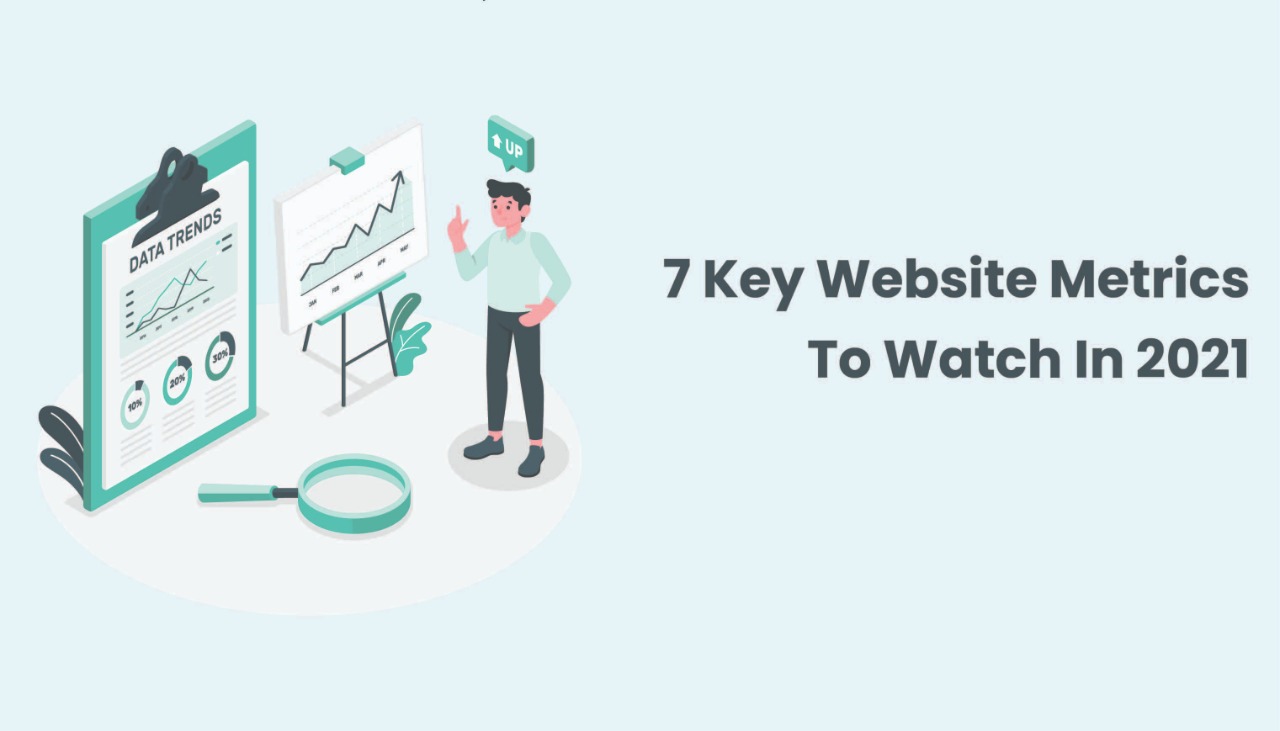It’s 2021 & Half the world population is online.
This online population is using the internet to find answers to their queries, or simply using social platforms to connect with more people. On the internet, through search engines, they are thus finding websites. The websites optimize their web content to rank on the search engines to be found by searchers on the SERPs (Search Engine Result Pages). Undoubtedly, websites are a must for businesses. Especially to reach out to the masses, create a brand identity, increase engagement with potential customers, convert them, and generate sales.
It’s no wonder there are around 2 billion websites worldwide. However, while starting a website is easy, maintaining it is not, and keeping it high on performance requires more effort. Various factors affect the performance of a website including – content & its quality, strategizing, advertisement campaigns, social media reach, etc. Every Website Metrics, every number related to the website is an indicator of what is working and what is not. Thus, to determine which factor reflects the performance, you must measure the performance of your website.
Today there are several Website metrics tracker & Website metrics tools available– both free and paid – that you can utilize. However, remember that depending upon your focus, some metrics can prove to be distracting and an unnecessary waste of time. So which metrics should you track? Below we have got for you a list of 7 key website metrics you should watch out for.
7 Key Website Metrics to Watch in 2021:
-
The Traffic & its Source: This may sound but obvious, but you should track the website traffic i.e. the visits to your website. Google Analytics, a free Website metrics tool offered by Google which shows you if your website performance is on a rise or decline or is stagnant. You can determine the effect of a new blog/guest post, etc. on your site performance if there are high spikes in your website when it’s published. You can go further and see how much traffic is coming from which source. The traffic sources include – (i) Search traffic i.e. visitors coming from search engines; (ii) Direct traffic i.e. visitors directly typing your website domain in the browser; (iii) Referral traffic i.e. visitors coming from another website; and (iv) Social traffic i.e. traffic coming from social media platforms. By monitoring the traffic sources you can determine which sources get you more traffic, on which sources you need to work on, and how much you should spend on the sources based on it.
-
The Repeat & Unique Visitors: Along with monitoring the traffic and its sources, you should also measure how much of the traffic includes Repeat/Returning visitors and how many are Unique Visitors. Unique traffic indicates how many new visitors you can attract, and repeat/returning traffic indicates how many visitors you can retain so that they visit again. Technically, there needs to be a balance between your unique and repeat visitors. If you have a high number of Unique Visitors, and very low Repeat traffic, this shows that you are performing well in attracting new visitors. However, you are lacking in retaining them. Thus, you need to build more loyal followers, and accordingly plan your strategies.
-
Onsite Behaviour: Once you know through which source a visitor has landed on your website and whether the visitor is a unique or repeat visitor, you should track what is the time a visitor spends on a page, how many pages are being viewed during the visit, and what is the complete duration of the visit. This will help you understand how well a webpage can engage, and how the internal links are working so that visitors are viewing other pages on your website. Using a well-known Website metrics tracker, you can thus track the average time spent on your website, and take measures to increase it. Also, by understanding what pages the visitor is viewing for how much time, you can get insights into the preferences of the visitor and accordingly plan your approach for conversions.
-
Conversions: The ultimate purpose for all your strategies and campaigns is the conversions, and thus, you need to track how much of the traffic is converted. While the sale is the final conversion; subscriptions, comments, reviews, feedbacks, surveys, etc. can also be conversions. Thus, your goal and what is the type of your business, Any of your web content will have a specific call-to-action (CTA) if the content is engaging enough the visitor may be ready to undertake that call-to-action and convert. Your profits highly depend on your conversion rate and thus, you can track it using Google Analytics. You can also use a Website metrics tool and get into more detailed metrics such as what are the conversion rates for every traffic source. Thus, you’ll know which are your valuable traffic source that you can target, and which are the ineffective traffic sources for which you need to employ new strategies.
-
Best Pages: Using Google Analytics, you can easily track the total number of views of the pages. You will then know which of your webpages are the most viewed/visited i.e. which are the best-performing pages of your website. If you compare variations in webpages and see which are the top-performing, you'll better understand what is the content to which your audience is responding. You should also track which web pages are performing better on SERP i.e. those that are appearing higher on the results page of search engines. This can be determined by finding the Keywords metrics so that you know which of your keywords are ranking the highest.
-
Bounce Rate & Exit Rate: When a visitor comes to your website but leaves immediately, that is referred to as a bounce. A bounce can happen because of ‘n’ number of reasons ranging from a poorly designed site, a site that doesn’t work, a site that takes a lot of time to load, irrelevant content, etc. Thus, if the bounce rate for your website is high, visitors are not finding what they want there. However, understand that the bounce rate varies according to the type of industry. For example, blogs will have a higher bounce rate than an e-commerce website. Similarly, there is the Exit Rate. When a visitor is engaged with your website and leaves at a particular page, that page is referred to as the Exit page. You can track every page to determine the percentage of visitors that leave the website from that particular page. This is the Exit rate. The simple distinction between both is that bounce happens on the first page of the visit itself, while exit can happen after the visitor has more interactions and engagement.
-
Social Media Platform Clicks & Shares: Social media has become an important source of traffic today, and hence is an important metric to look out for. Using a Website metrics tracker you can easily track the number of clicks for a social media post/advertisement, and the shares it receives, the traffic coming from it, should be tracked. Social Media Platforms is the place where customers and potential customers of a website are available – this is a powerful platform, one where they can freely express themselves. e sure to keep a watch out for the performance of your social media platforms.
That’s it, friends, this is our list of the most key 7 Website Metrics you should keep a vigil on. These metrics will help you a lot in determining your website’s performance – where it is going right, and where it is lacking – accordingly, you can plan your next steps for better performance.






Post Comments